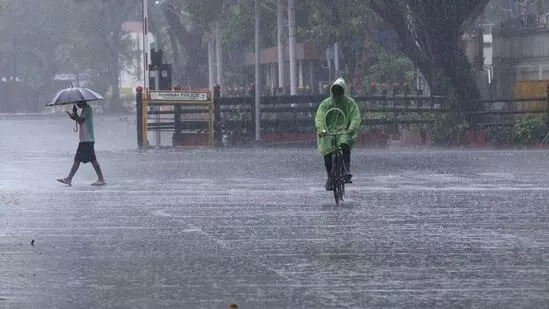Deluge in July to drought in August, Telangana's unpredictable weather can hurt economy
The stark contrast between July’s abundance and August’s scarcity underscores the variability of the Indian monsoon
By Anoushka Caroline Williams
Representational Image.
Hyderabad: The weather patterns in Telangana have taken residents and meteorologists on a remarkable rollercoaster ride during the Southwest Monsoon (SWM) of 2023.
After experiencing record-breaking rains in July, the state faced an unexpected twist as August brought the lowest rainfall level since 1972. This meteorological phenomenon has left its mark on the state’s history and raised important questions about climate variability and its implications for the region.
The record-breaking rains in July
July 2023 will be remembered in Telangana for its extraordinary rains. The state witnessed an unprecedented amount of rainfall, surpassing previous records set decades ago. These heavy rains brought both blessings and challenges.
On the positive side, they replenished reservoirs, alleviated water scarcity concerns, and boosted agricultural prospects. However, the deluge also caused severe flooding in certain areas, highlighting the need for robust infrastructure and flood management systems.
The August drought
Just when it seemed like the monsoon was on an unstoppable streak, August arrived with a surprise. This year’s August recorded the lowest rainfall levels in Telangana since 1972. The transition from surplus to deficit was swift and dramatic.
RECORD TUMBLES
— Telangana Weatherman (@balaji25_t) August 28, 2023
After 1972 August, this year's August had lowest rainfall in Telangana. That means almost 50years record has been broken by this August. Record breaking rains in July followed by record breaking deficit in August. Such a rollercoaster ride it has been for SWM 2023
As a result, concerns about water availability resurfaced, and agricultural activities were affected. The sudden shift in weather patterns raised questions about the unpredictability of the monsoon and its impacts on the region’s economy and livelihoods.
Climate variability and implications
The stark contrast between July’s abundance and August’s scarcity underscores the variability of the Indian monsoon. India relies heavily on the monsoon for its agriculture, and fluctuations in rainfall can have far-reaching consequences. This year’s extreme swings highlight the importance of adapting to a changing climate.
Climate scientists have long warned of increased climate variability due to climate change. While it’s challenging to attribute a single weather event to climate change, the erratic monsoon patterns seen in Telangana are in line with global trends of increased weather extremes. As temperatures rise, weather systems become more unpredictable, leading to situations like the one observed in SWM 2023.
The way forward
The rollercoaster ride of SWM 2023 in Telangana serves as a reminder of the need for robust climate adaptation strategies. Farmers, policymakers, and communities must work together to prepare for both excess rainfall and drought conditions. Improved water management practices, efficient irrigation methods, and the diversification of crops can help mitigate the impacts of variable monsoons.
Furthermore, investments in weather forecasting and early warning systems are critical to providing timely information to communities at risk of flooding or drought. This empowers people to take proactive measures to protect themselves and their property.
The Southwest Monsoon of 2023 in Telangana has been a journey of extremes, from record-breaking rains to a historic rainfall deficit. This rollercoaster ride highlights the ever-present challenge of climate variability and the need for adaptability in the face of changing weather patterns.
As Telangana continues to grapple with the aftermath of SWM 2023, it’s imperative that lessons are learned, and strategies are developed to safeguard against future monsoon surprises.